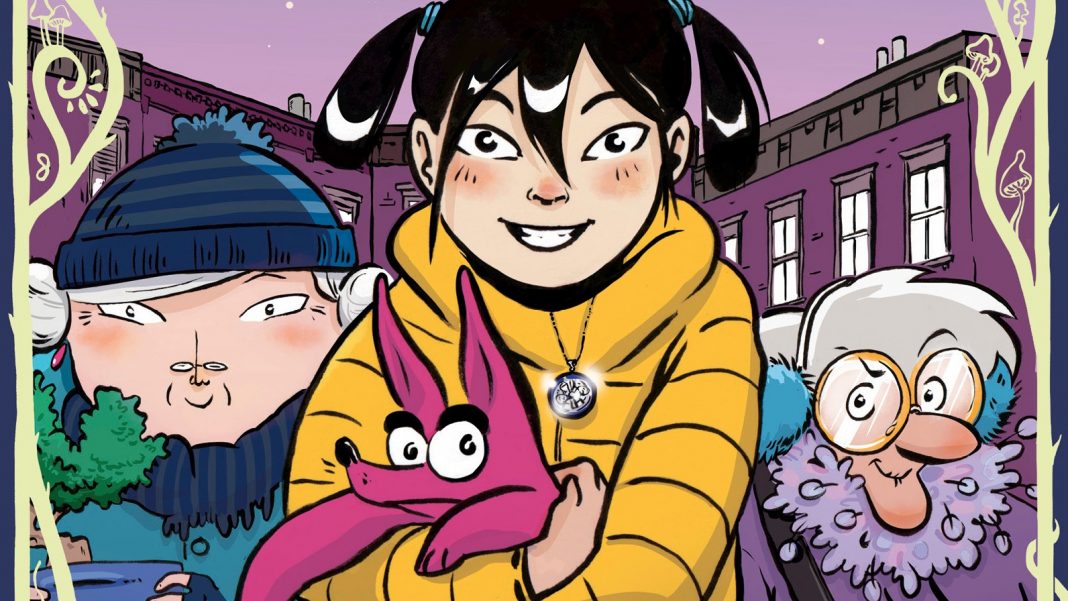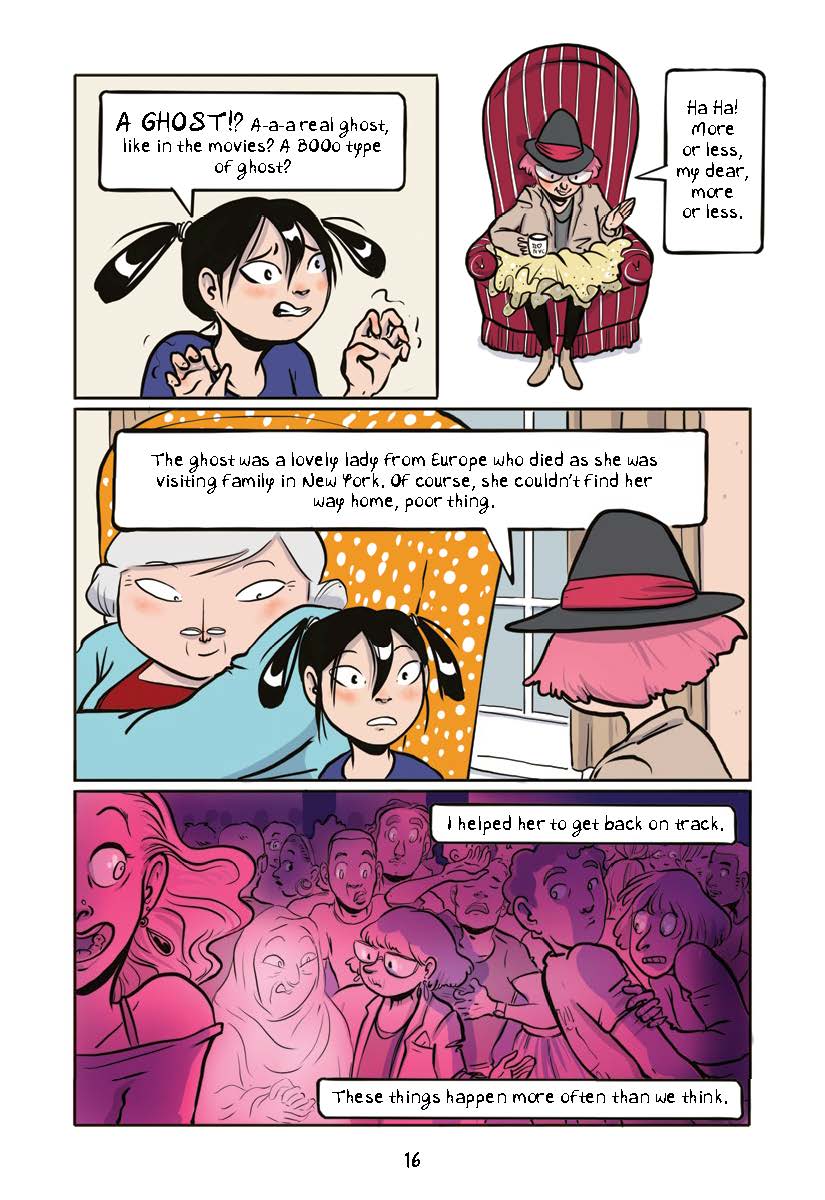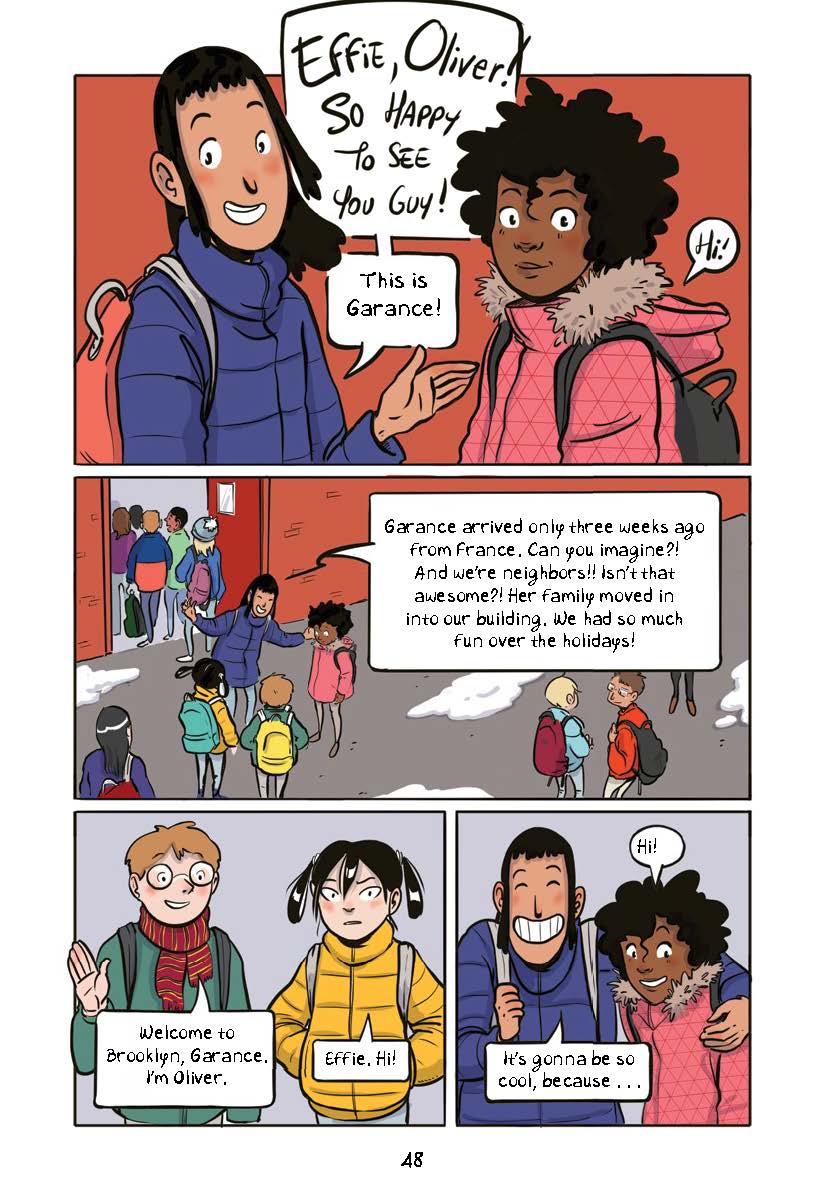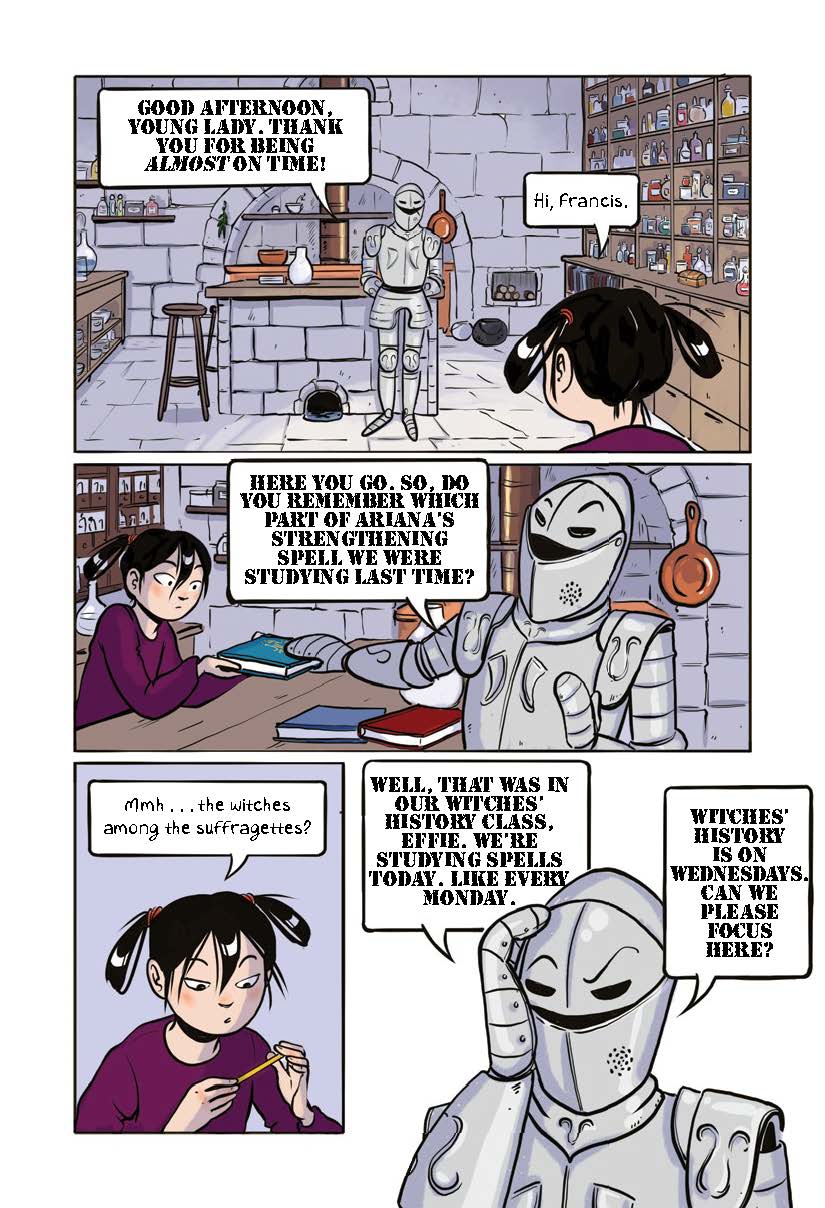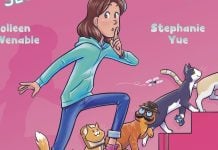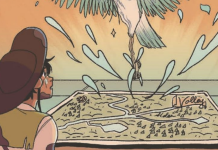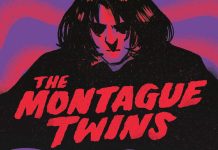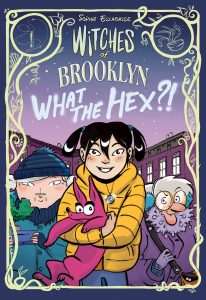
In the sequel to Witches of Brooklyn, Witches of Brooklyn: What the Hex?! by Sophie Escabasse, Carlota, Effie, and Selimene return for more magical adventures in the strange and fanciful kingdom known as Brooklyn! Both graphic novels are available now from RH Graphic, and with spooky season just around the corner, now is the perfect time to sink into this wonderfully witchy world!
To learn more about the world of Witches of Brooklyn, The Beat caught up with Escabasse over email and asked all about witchy world building, the complications that arise when you’re writing about a place you used to live that you don’t anymore, and find out what goes into being a witch!
AVERY KAPLAN: After reading only a few pages of What the Hex?, readers will discover that you are taking the foundation laid by book one and exponentially expanding on it! How did you approach building out the world of Witches of Brooklyn?
SOPHIE ESCABASSE: The way I see it is a bit like when your favorite cousins, or a very close friend, introduce you to their friends. You love your cousin, so chances are you will like their friends and their favorite restaurants. There’s the excitement of discovering something new, knowing that you would probably really like it.
I’ve been hanging out with Selimene, Carlota and Effie for quite a while and it’s natural and easy that their world expanded. There are directions towards which I would like to steer the boat but mostly I follow them.
KAPLAN: In addition to revisiting our favorite characters from book one, we get to meet an exciting new batch of characters in book two. Was there any particular character that was especially important for you to introduce in this book?
ESCABASSE: I love Aunt Ma, she’s the ultimate original. She, like legendary witches, was tempted by the idea of taking a tree as a retirement form but couldn’t fathom being lost in the woods. She, instead, decided on a Bonsai tree. You have to respect a Bonsai witch.
I also have a soft spot for Garance. She’s strong willed and fun, and she doesn’t let Effie impress her in any way. Both girls together make a formidable pair that I’m hoping to take on many more adventures.
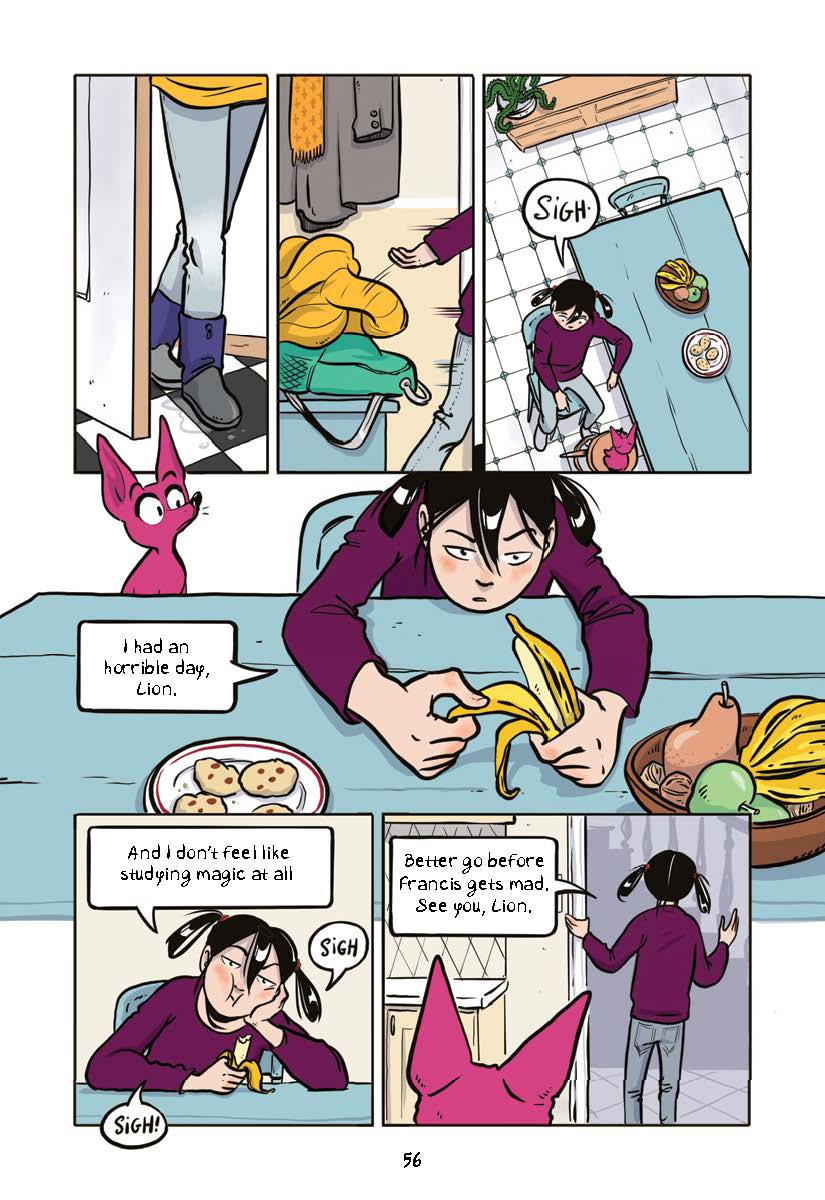
ESCABASSE: I went back to blue for the third book. I realized that it was the color I was the most comfortable with for sketching. I find it more peaceful to look at blue than red.
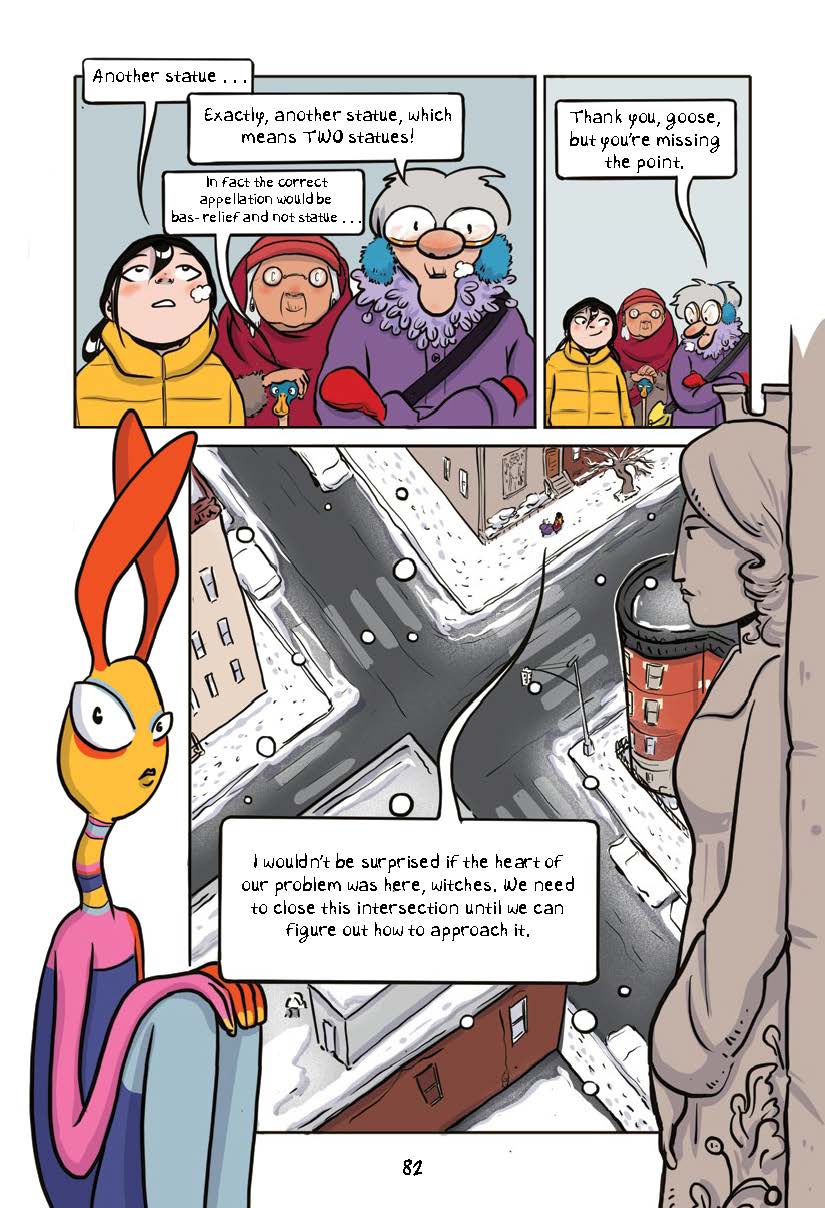
ESCABASSE: I can only talk for myself, but I found it easy to have ideas and develop stories that took place where I lived. I wouldn’t have had the idea of the plot for What the Hex if I wasn’t passing through that corner in Park Slope at least once a week. Same for Ditmas Park, the neighborhood where the Witches live is the neighborhood I used to live in. I love the spontaneity and the ease of drawing my area.
That said, there’s also advantages in setting a story in a place you don’t live in, because it forces you to do research, uncover things you probably wouldn’t have if you were living two streets away. We tend to lose our curiosity after living in the same spot for a while.
Because I’m not a Brooklynite anymore, maybe I will become more adventurous and take the witches further away, who knows, we may venture into Manhattan!
KAPLAN: Both book one and book two of Witches of Brooklyn emphasize that many of the stereotypical assumptions about witches are inaccurate! What defines a witch? How do they relate to their communities?
ESCABASSE: That’s a great question. I would say that everyone probably has their own idea of what a witch is or could be, depending on how much they’ve read on the matter or which anime they were watching as kids, things like that… In my case, it’s true that I tend to go away from the caricature of the obligatory old, ugly, with warts, dressed all in black, nasty witch.
There’s no physical requirement to be a witch. A witch is a strong independent, generous and imaginative soul. Great connoisseurs of human nature as well as Mother nature. The way I see it, the magic of a witch is an ancestral thing that passes through bloodline but occasionally some people with powers can be born in a family that never had any. In that case, chances are that their power will be dormant all their lives, though surprises do happen.
There’s no hippocratic oath in the witch’s case but naturally most witches tend to involve themselves with their communities, and help others (you would be surprised of how many witches are involved in doctors without borders and other similar organizations for instance). I’m not saying that a witch can not be bad, it does happen sometimes, and it’s a terrible thing to see. In those rare cases the situation has to be handled by other witches, obviously.
Having a black cat or a familiar isn’t a requirement either, though it’s true that most witches often end up living with some creatures of some sorts. Life is funny that way.
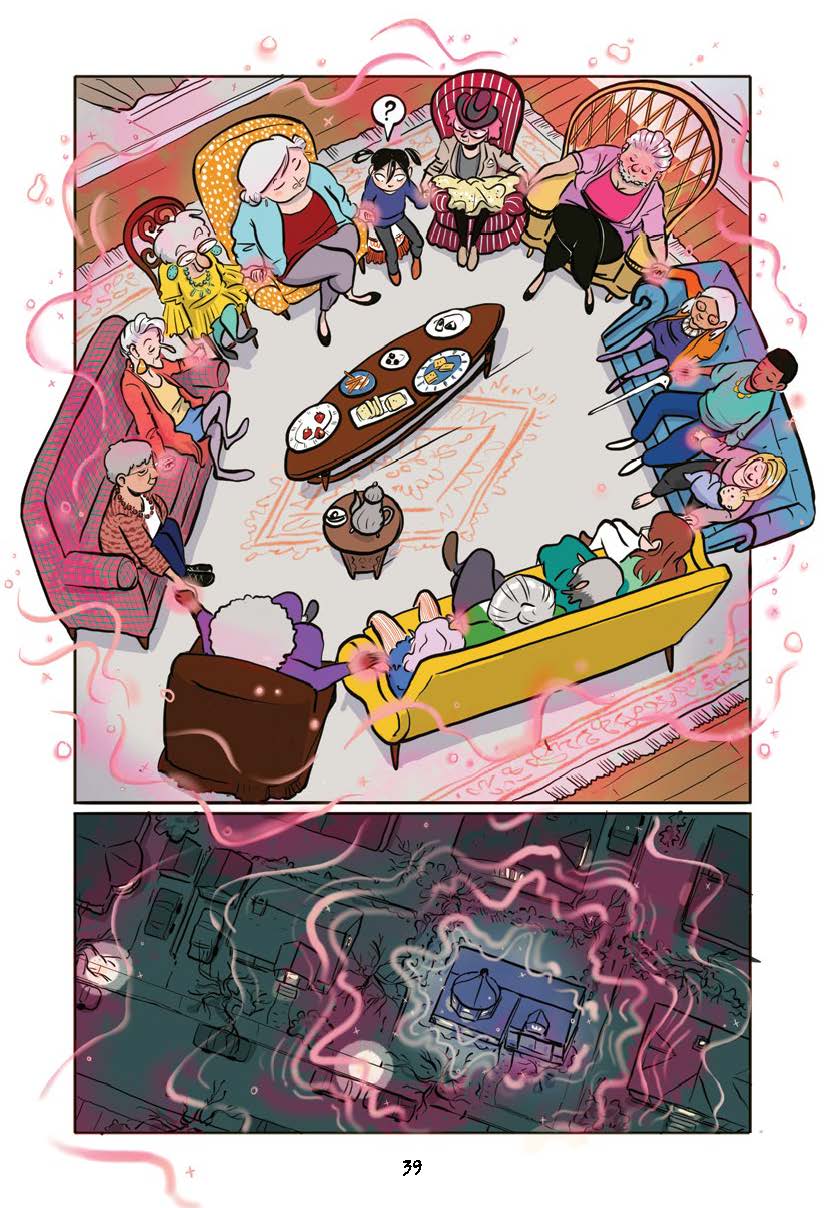
ESCABASSE: I thought it was amusing to imagine a coven of serious, hardworking witches operating for the good of their communities, discovering that witchcraft was now a growing trend. That there were podcasts, and tea parties, private classes and dinners on the matter. How would they react?
That said, I believe the witch’s status is for anyone that would recognize themselves in it. I think that words have power, and there’re some days when I need the extra kick of calling myself a witch, so I certainly won’t deny it to anyone.
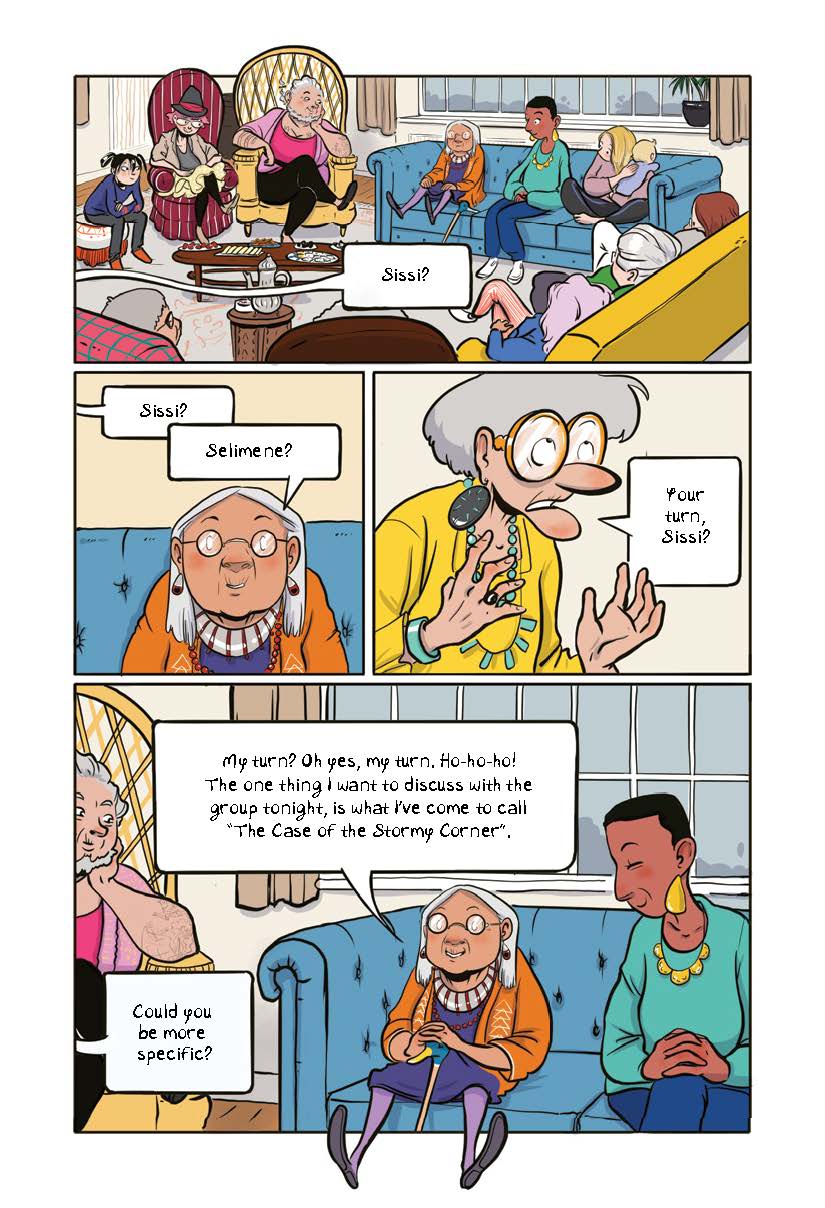
KAPLAN: The acknowledgements include this line: “Your work with the raccoons made this book possible.” May I ask if this is a literal statement?
ESCABASSE: Totally literal, though raccoon stands for kids ;)
Both Witches of Brooklyn and Witches of Brooklyn: What the Hex?! are available at your local bookstore or public library.


